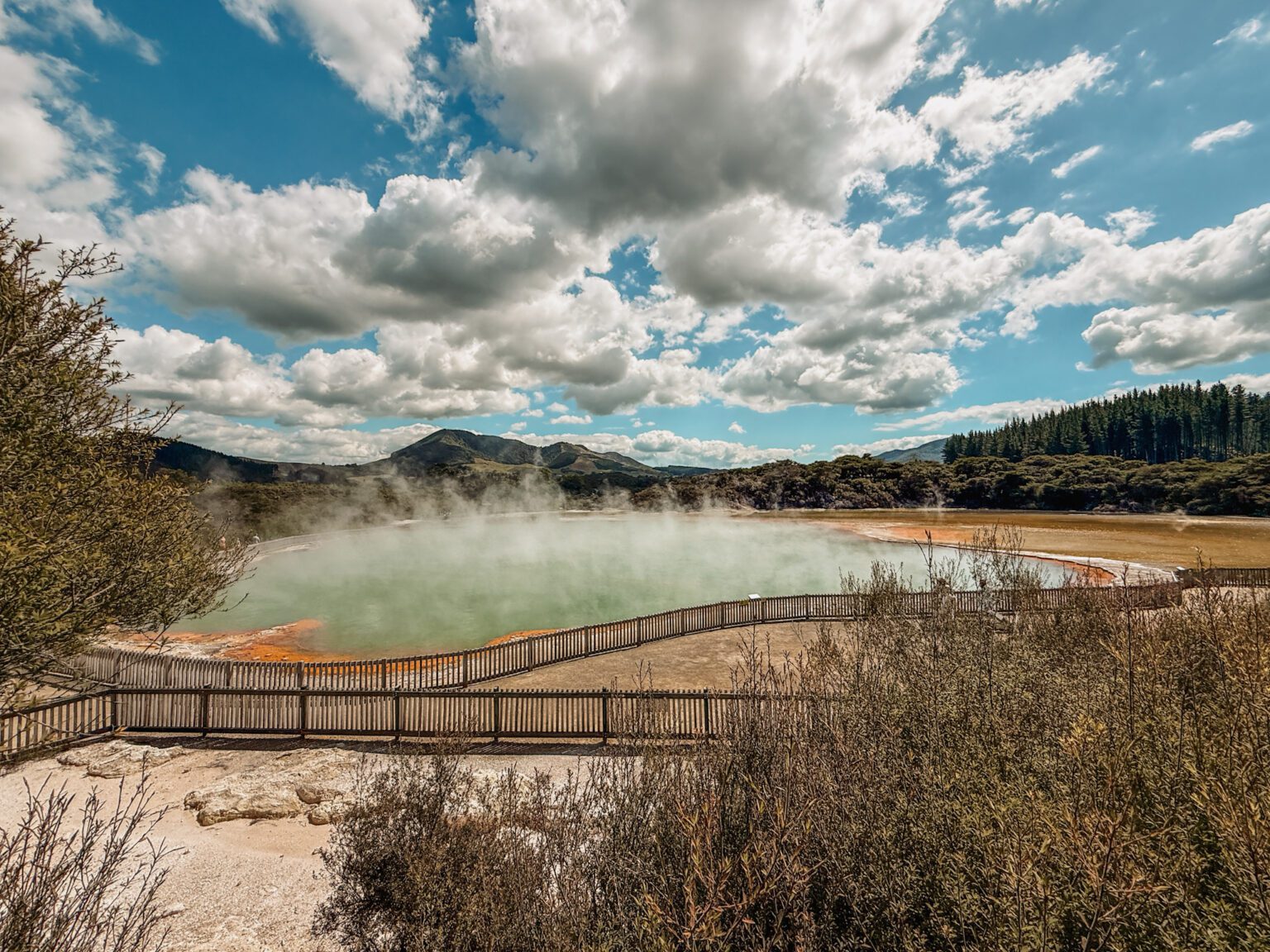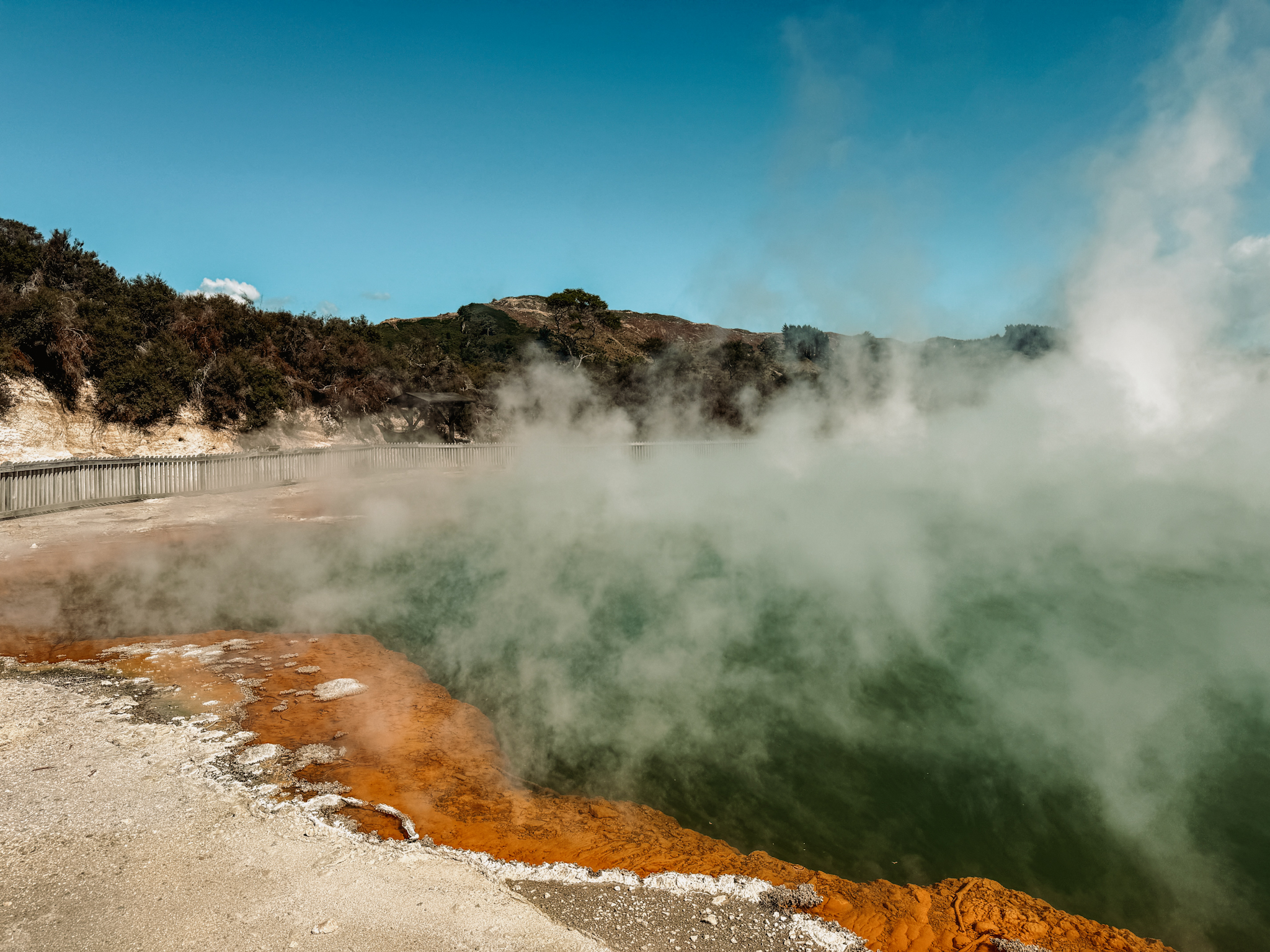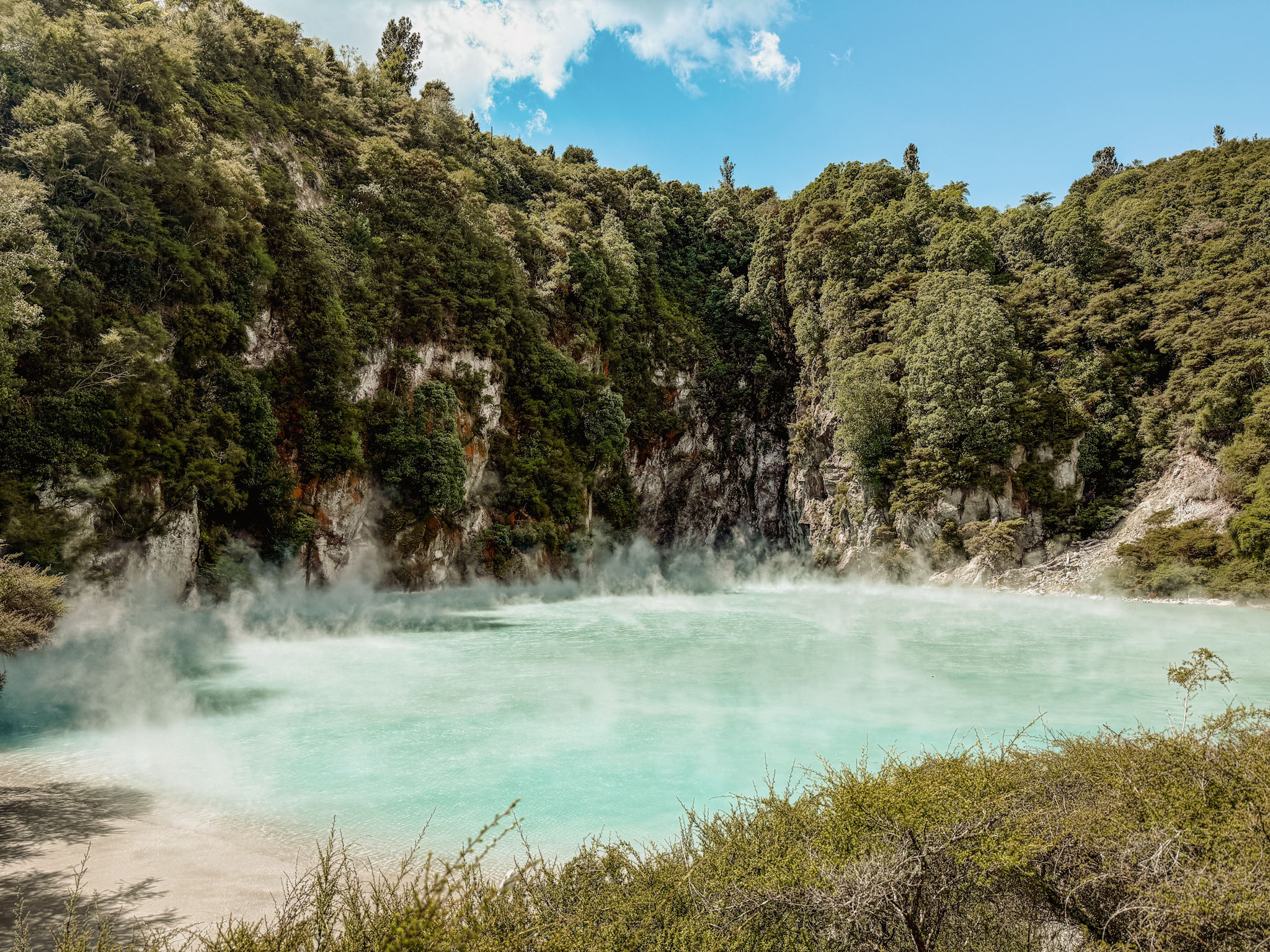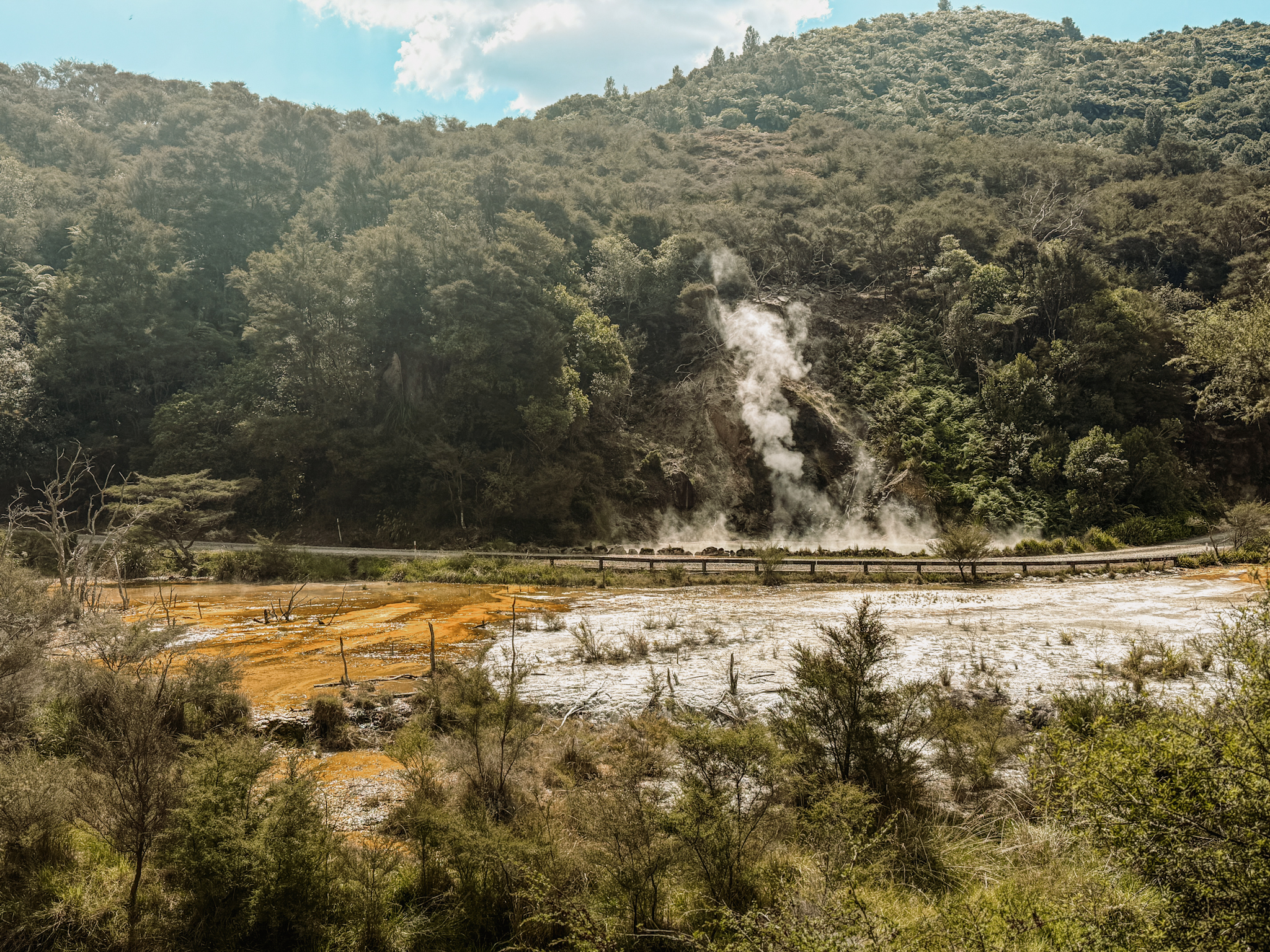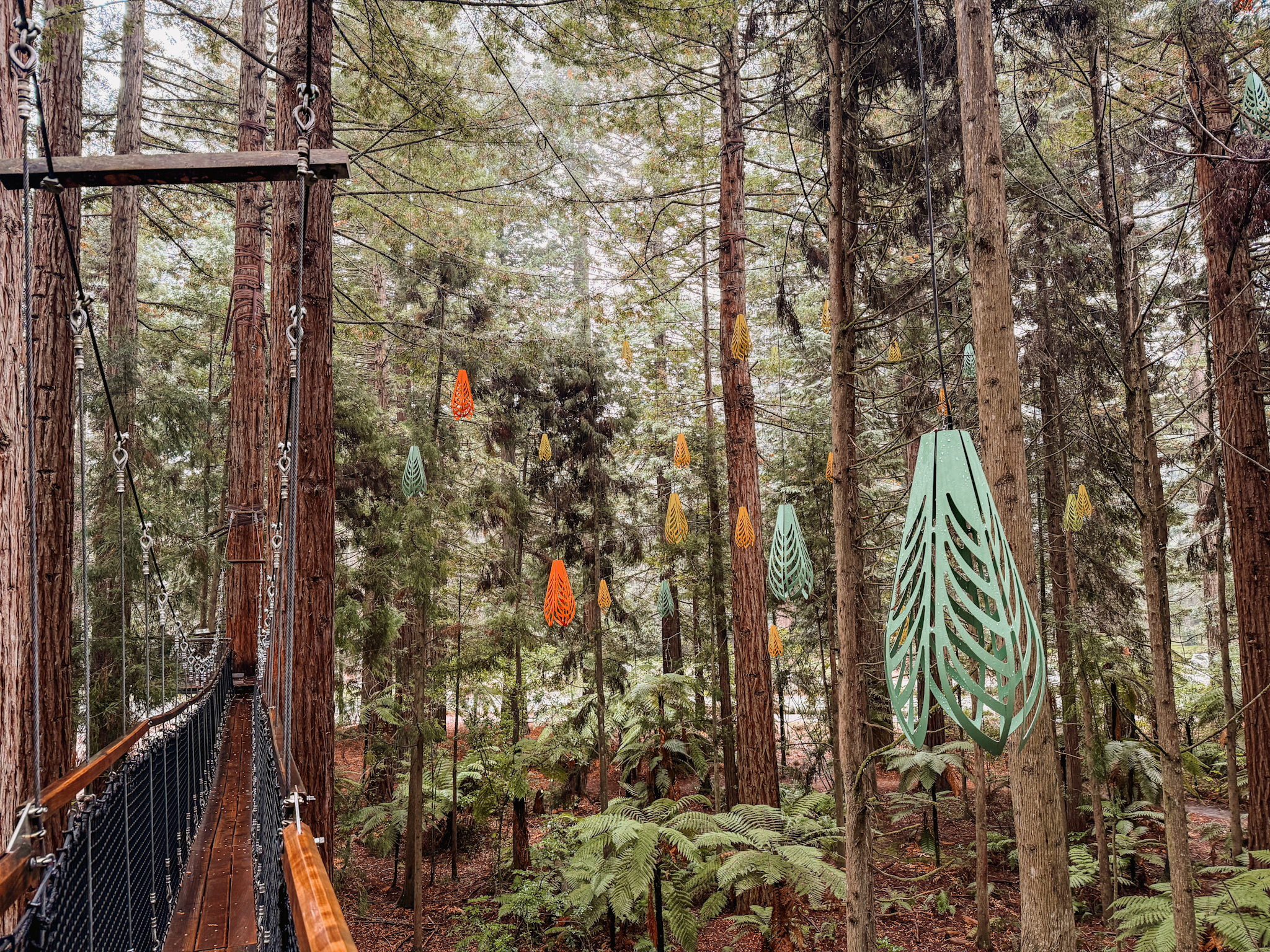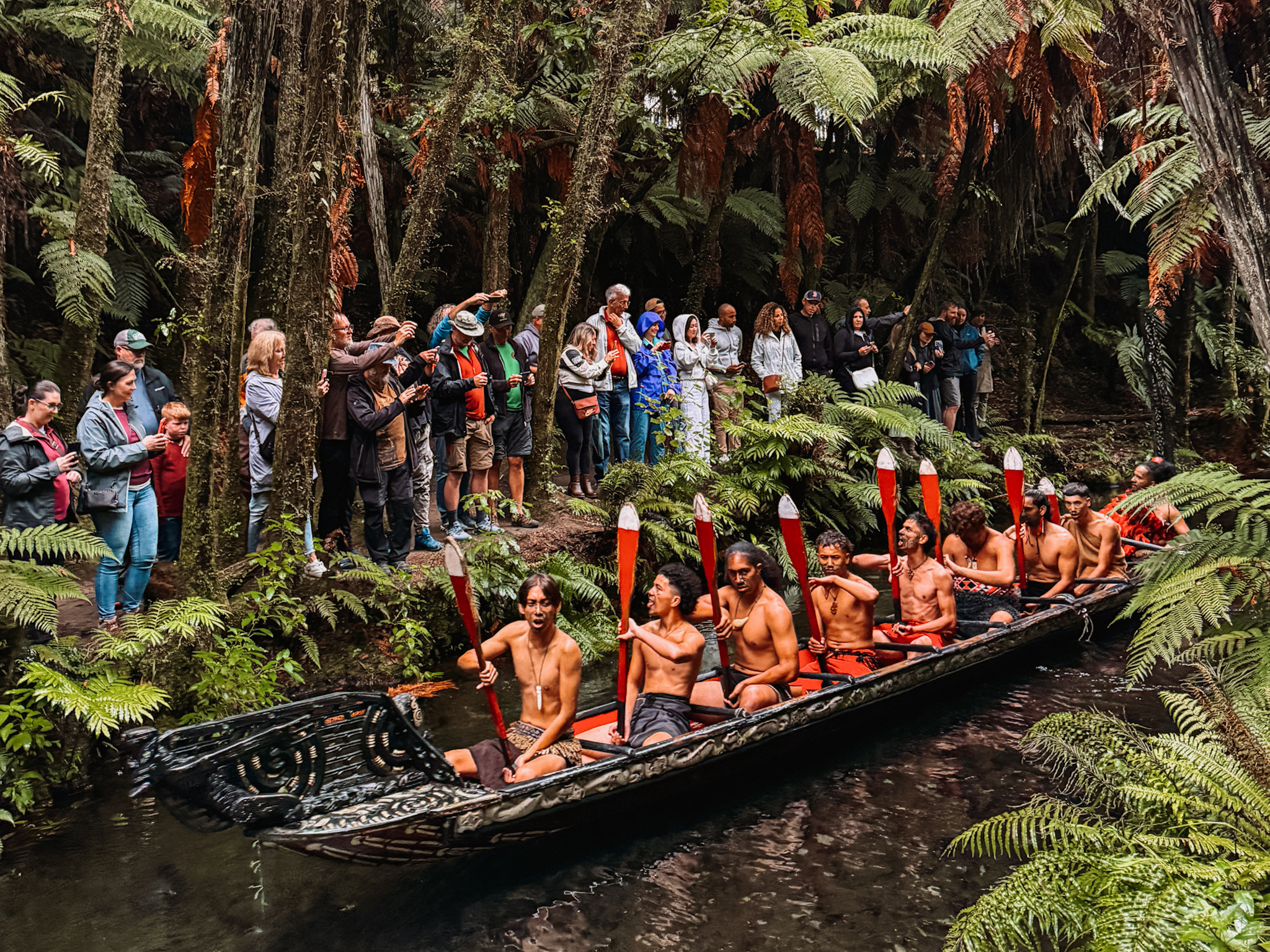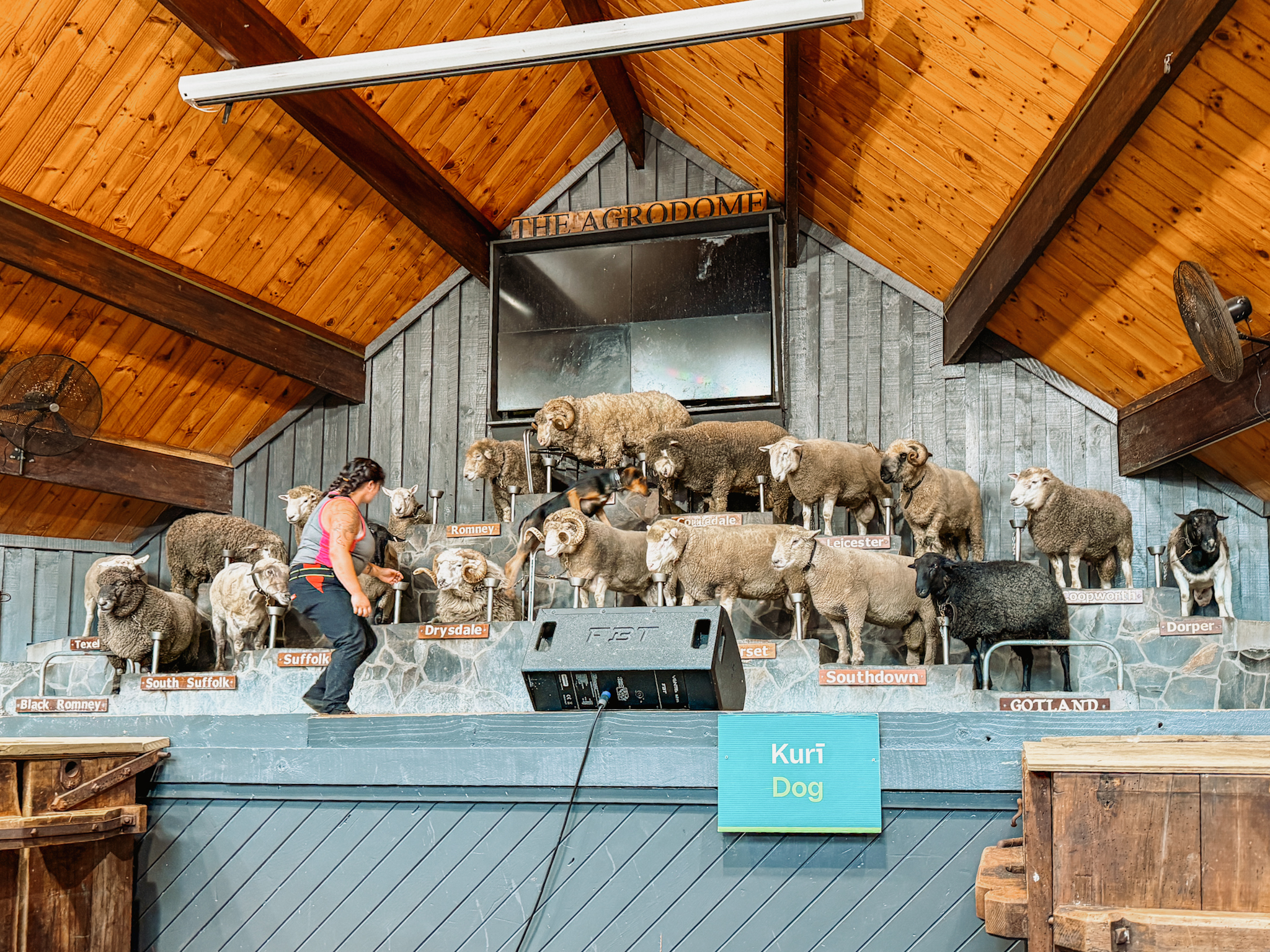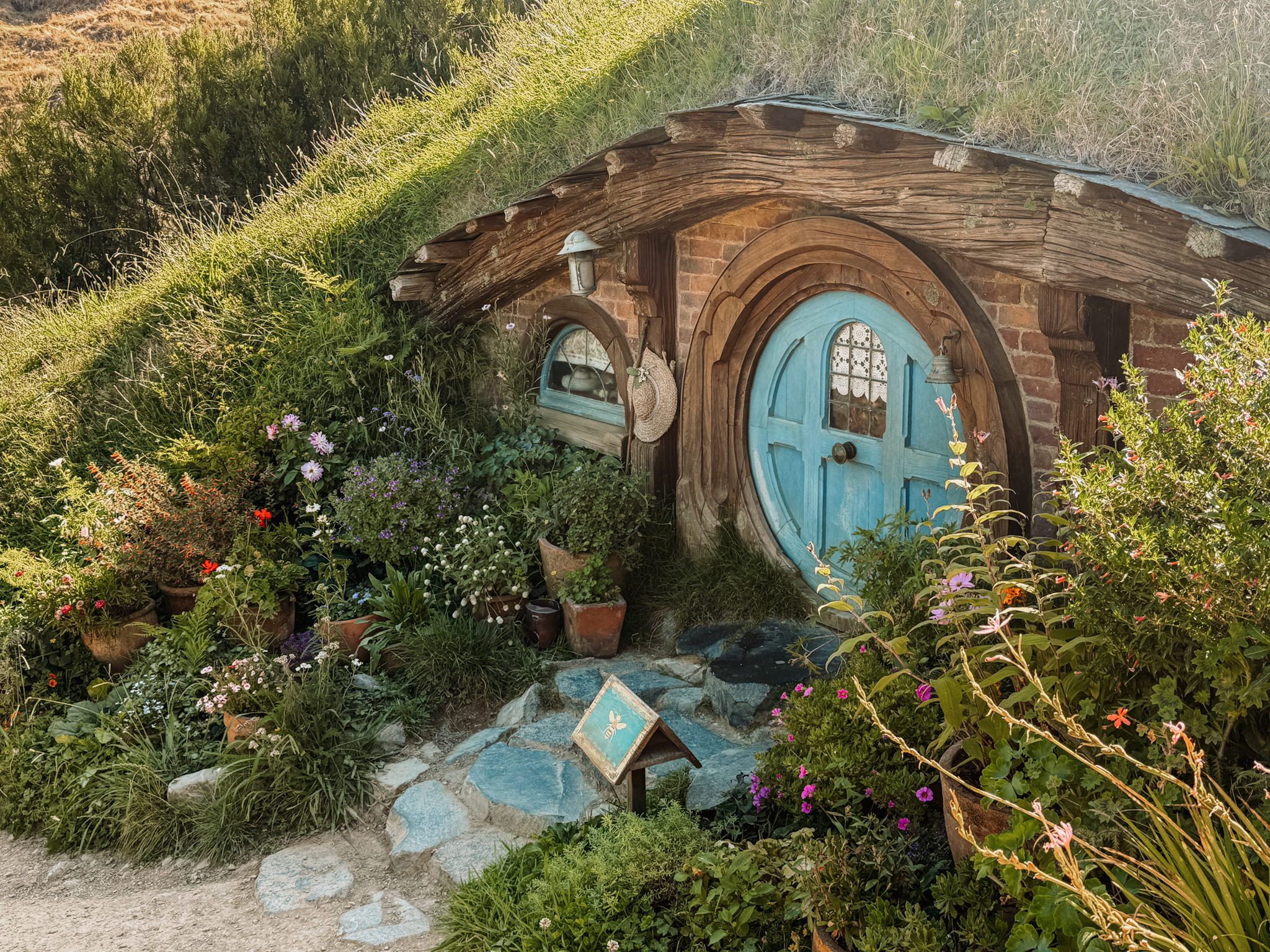Rotorua is one of the most culturally significant areas within New Zealand, having a large amount of celebration and explanation of the Māori culture and how it is part of New Zealand’s identity. It is also an area with a great amount of geothermal parks and activities that make the landscape look like another planet. This Rotorua itinerary is written with the assumption that you are coming from Taupo (south) and heading towards Auckland or the Coromandel Peninsula (north). If you are traveling in the other direction , you can reverse the Rotorua itinerary.
The best way to explore this Rotorua itinerary is by renting a car.
A Rotorua Itinerary Simplified
Daily Activity
Where to Stay
Day 1
Wai-O-Tapu Thermal Wonderland and/or Waimangu Volcanic Valley
Explore the town of Rotorua
Stay in Rotorua
Day 2
Te Puia: New Zealand Maori Arts and Crafts Institute
Whakarewarewa
Redwoods Treewalk
Mitai Maori Village + Hangi Dinner
Stay in Rotorua
Day 3
Agrodome
Hobbiton
Stay in Rotorua or between Hobbiton and Waitomo
Day 4 (Optional)
Waitomo Glowworm Caves
Raglan
Day 1: Thermal Parks
To start this Rotorua itinerary coming from Taupo, consider stopping at one or both of these thermal parks to understand the unique landscape and ecosystem that exists in this part of New Zealand. There are so few of these kinds of landscapes around the world!
Option 1: Wai-O-Tapu Thermal Wonderland
The Wai-O-Tapu Thermal Wonderland is an active geothermal area less than 30 minutes outside of Rotorua. It showcases incredible variety in the different geothermal formations that exist in New Zealand. The park is famous for its geyser, which is set off by the staff daily at 10:15 AM, and the pool aptly named the Champagne Pool due to the bubbles that get formed in the water of the pool.
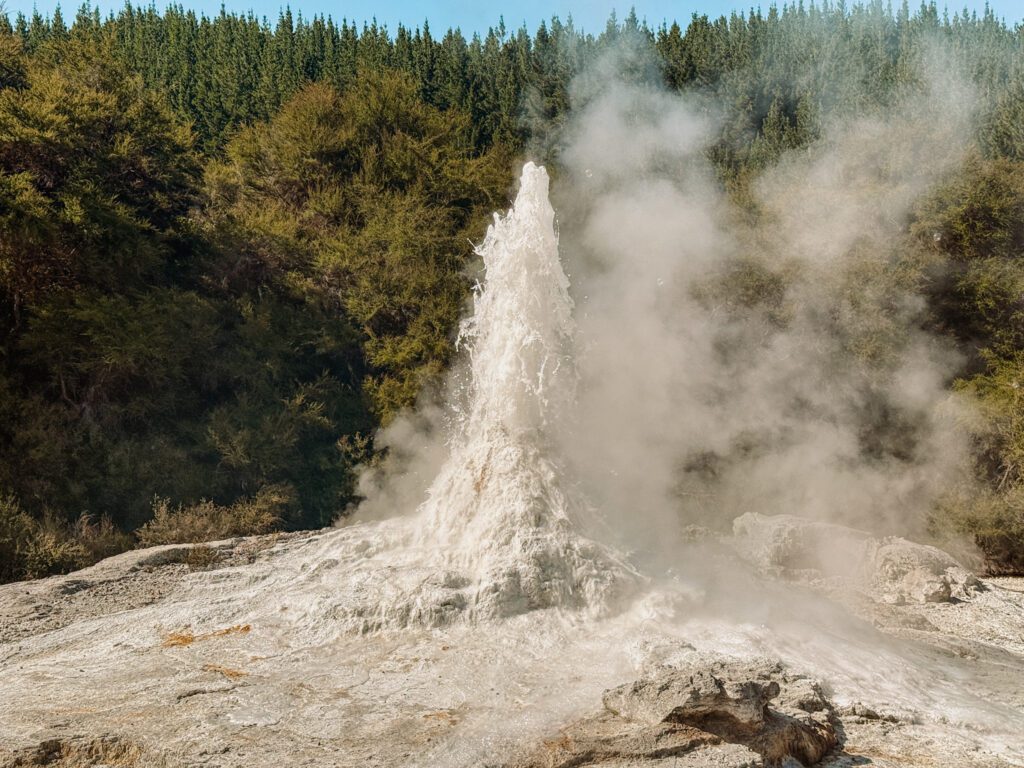
How to Best Experience the Park
The park is the most popular after the geyser is set off so to experience it with as few people as possible, make sure to go to the park right at opening at 8:30 AM. You will then have to drive from the park entrance to the geyser parking lot and back but there is sufficient parking at both destinations to make this happen. The park itself is designed around a large loop that is cut into three portions. To do all three portions, the walk is about 2 miles (3 kilometers) and takes about an hour and a half. If you go to the park prior to seeing the geyser, you will be able to do the first part of the loop, which is the most crowded and popular portion. You can then return to the other two portions of the park after experiencing the geyser show.
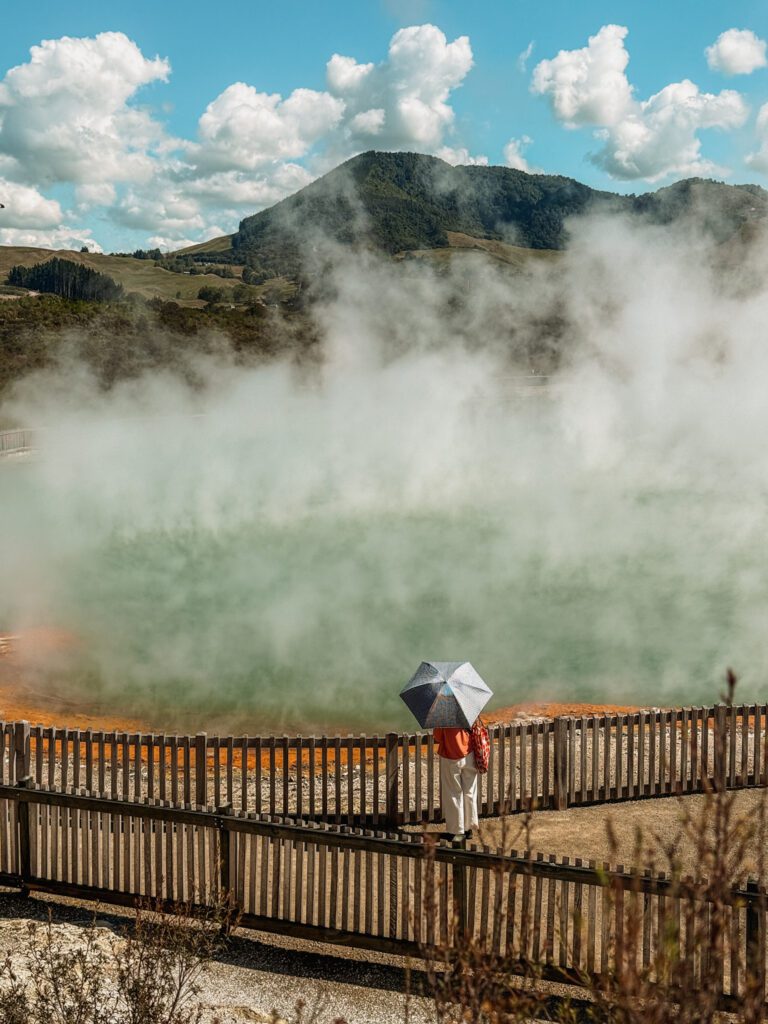
Option 2: Waimangu Volcanic Valley
For the second half of the day, consider visiting the Waimangu Volcanic Valley. For this park, you get to walk 2.5 miles (4 kilometers) through a valley with geothermic formations. The interesting thing about this park is that the whole valley was formed in 1886 due to the volcanic eruption of Mount Tarawera. It continues to be monitored today and you can learn about all the different formations along the way, such as Frying Pan Lake, the largest hot spring in the world.
How to Best Experience the Park
While much less concentrated in its geothermal displays than the Wai-O-Tapu Thermal Wonderland or the Orakei Korako Geothermal Park in Taupo, it goes through beautiful landscapes with far fewer crowds. The experience includes a shuttle bus ride back to the visitor center so you only have to walk in one direction down the valley. There are also a few shuttle bus stops along the route so you can always end your tour short and return to the visitor center before the very end of the trail.
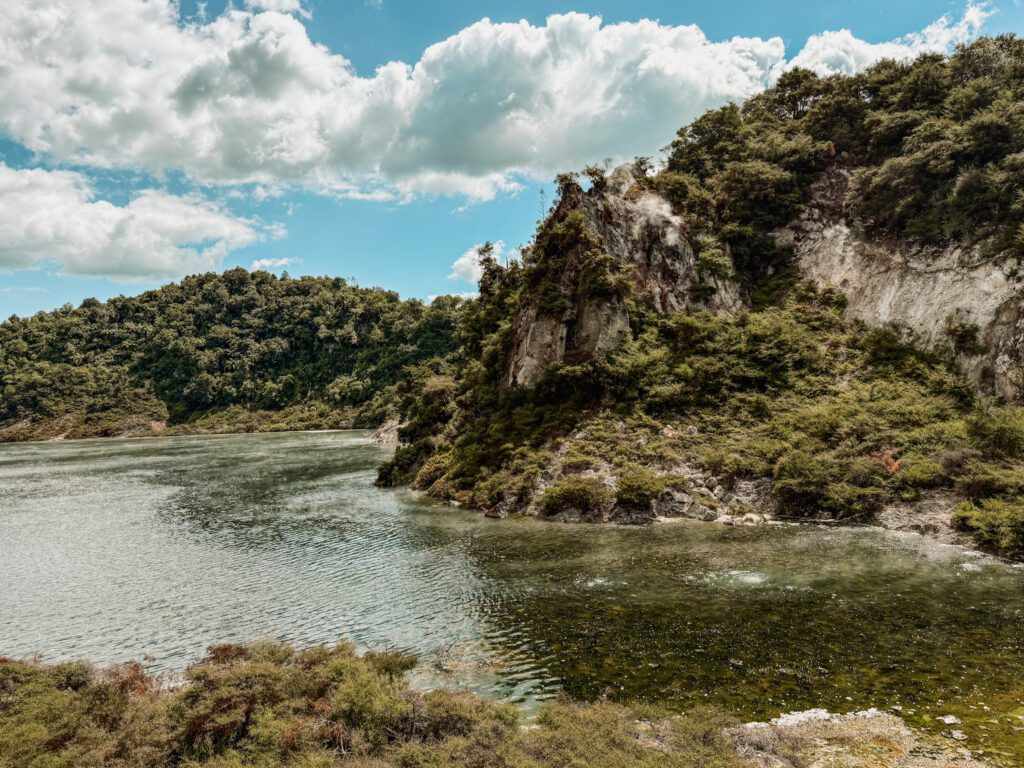
If you want to spend a full day in just one geothermal park as part of your Rotorua itinerary, then this is the one park to consider. Through their full experience, you will get to take a 45 minute boat ride on the lake at the end of the trail where you’ll see geothermal activity that can only be seen from the boat and learn about the nature around. This full experience will take at least 3 hours.
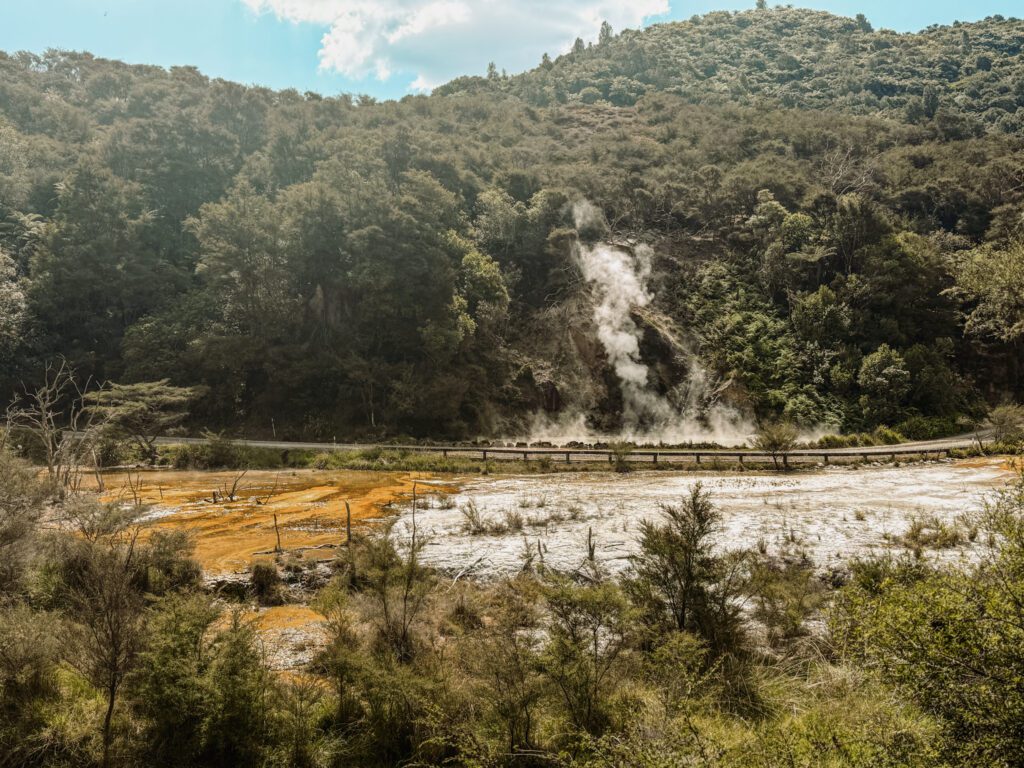
Rotorua
Finally, as you make your way into Rotorua, there are a few areas that are worth exploring. Kuira Park is a free park with local geothermal activity, including various mud and sulfur pools. Within the park, you can soak your feet in designed geothermal baths. It is a free way to see some of the geothermal activity that happens in the region. Next, head to the Rotorua Lakefront where you can walk around to enjoy nature and experience the lakefront boardwalk.
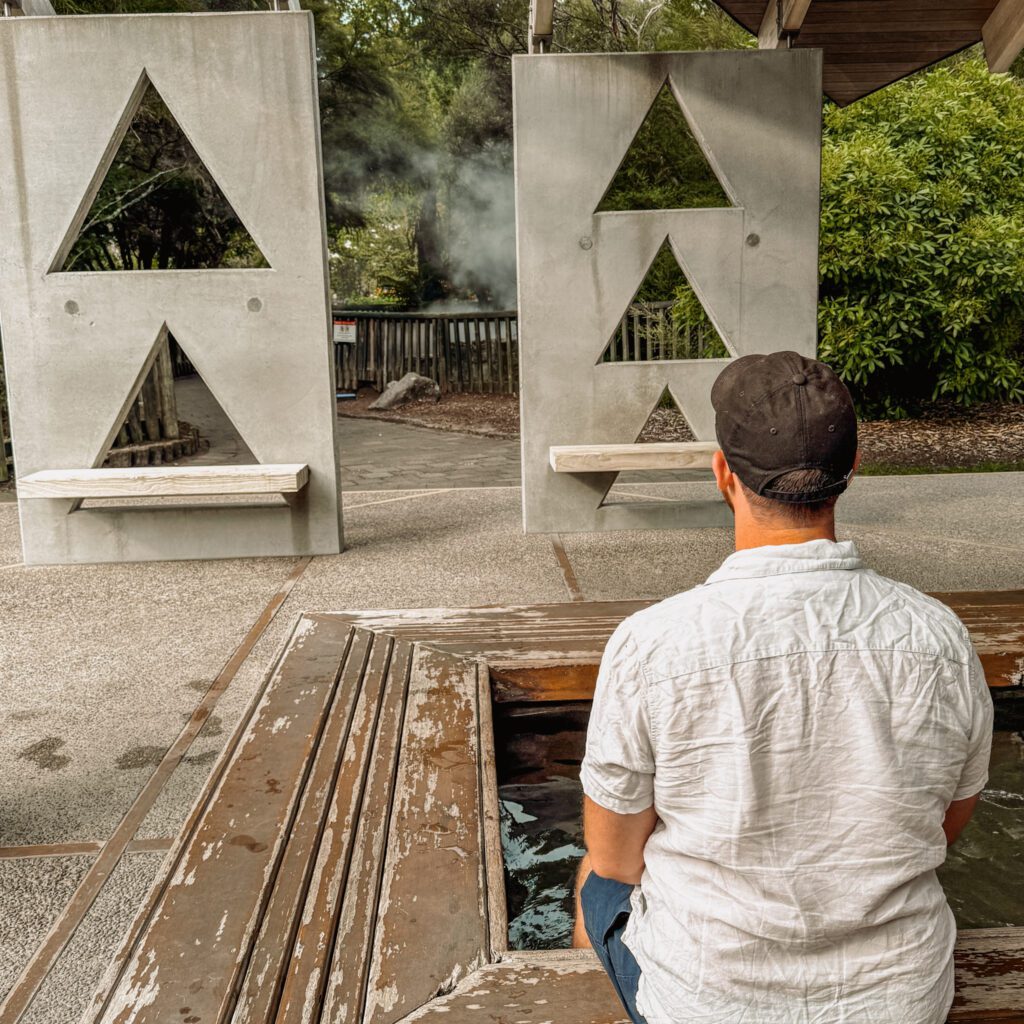
Where to Eat in Rotorua
Finally, head to Eat Street, the main area of town with restaurants and bars. On Thursdays, the city hosts a night market where a variety of restaurants of international cuisine have stands so you can try different cuisines. The city also has a variety of private thermal baths that you can consider visiting if you want to relax in a spa-like experience. (You can read about other thermal baths and hot springs around New Zealand here.)
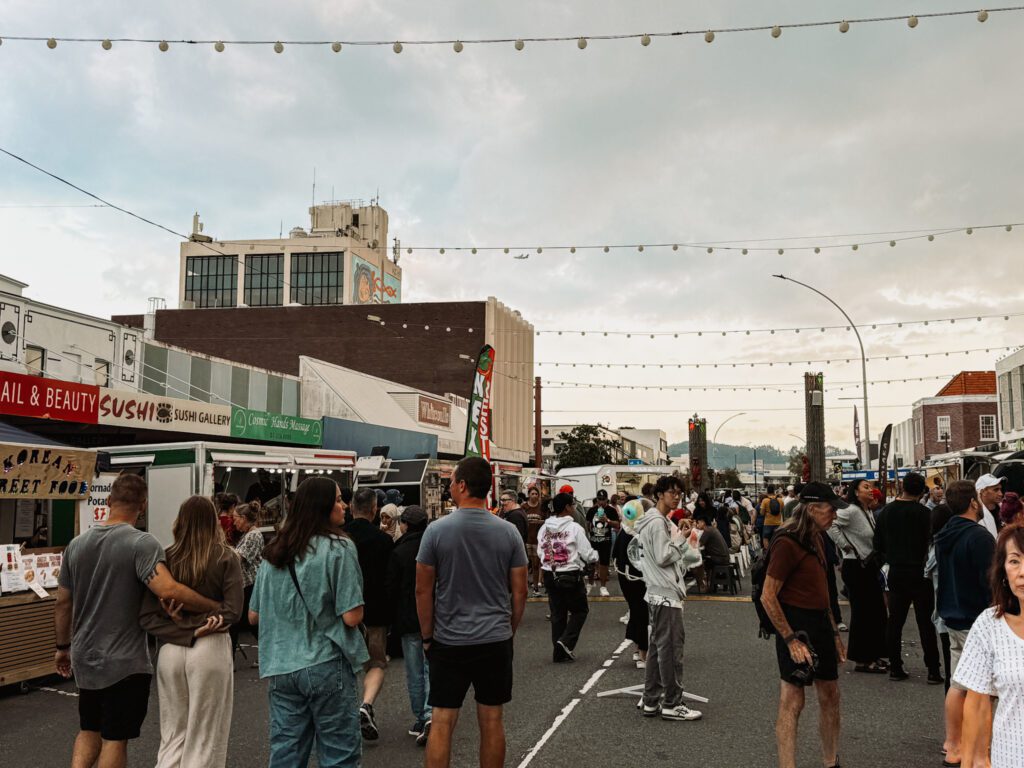
Check out various hotels for Rotorua here. We recommend staying near the town center to take advantage of the waterfront and dining here.
Day 2: Maori Cultural Exploration
On your second day of this Rotorua itinerary, you will take the day to dive deep into the history and culture of the Māori people. While it may seem like they are part of the culture today, there was a time when their cultural identity, crafts, and language were suppressed by the New Zealand government. However, today their culture is celebrated within the country. Unfortunately, much of the artistry and language was lost over a few generations and there are efforts in place to make up for the knowledge that has been lost.
Te Puia: New Zealand Maori Arts and Crafts Institute

Your first stop of the day is Te Puia – the New Zealand Māori Arts and Crafts Institute, a school and museum where students are trained in an apprenticeship over two years to master the different crafts that are most important in the Māori culture, including weaving, stone and bone carving, and wood carving.
There are a few different experiences that can be done here, including a guided tour of the school, a tour of the geothermal land around the school, and a cultural demonstration. Finally, Te Puia provides a buffet dinner and Haka demonstration in the evening where you get to eat traditional Māori cuisine and learn more about the culture. (We believe that this experience is vital to your visit to New Zealand and have provided another option for it below.)
Whakarewarewa
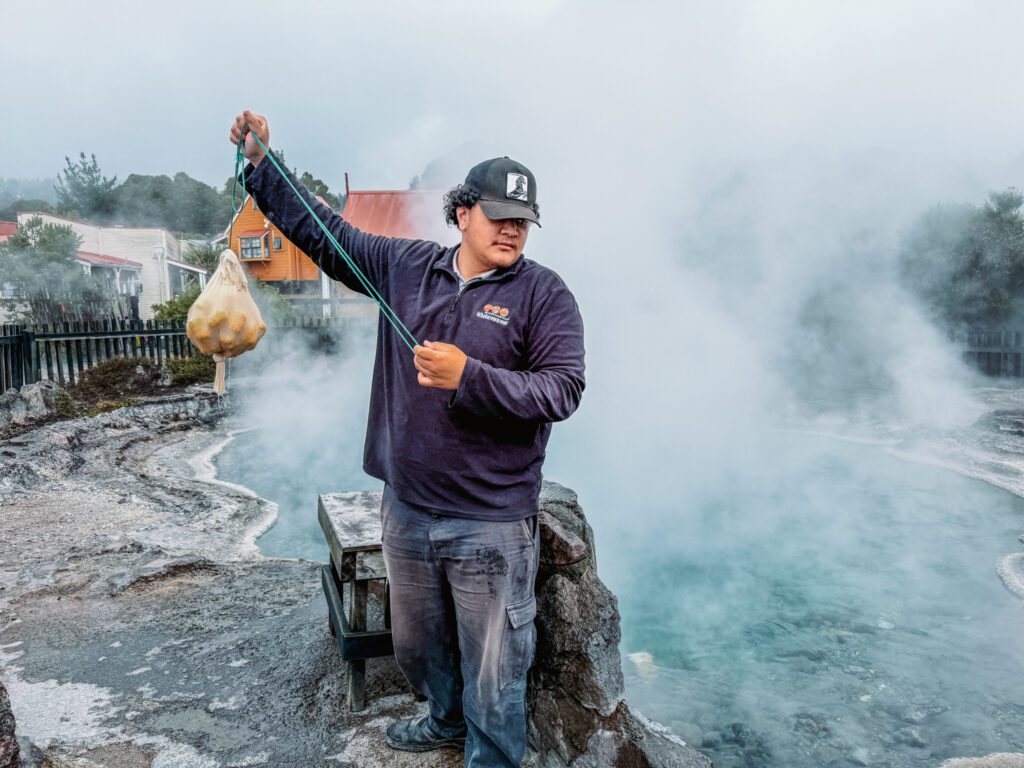
After visiting the important school, head to Whakarewarewa, a local Māori village that continues to practice a traditional way of life. This will give you some insight into how the Māori people used the geothermal land to their advantage and how the culture continues to live on today. The community members of the village are the ones who are sharing their story. Access to the most unique parts of the village can only be visited through a guided tour, allowing you to see how they use the naturally hot/boiling water for bathing and cooking.
To try some traditional Māori cuisine, including Hangi pie, head to Kai Caff Aye for lunch in the Rotorua Business District. Hangi is a traditional method of cooking food for the Māori people and when put into a pie, it is a perfect example of combining Māori and European cuisine into a quintessential New Zealand food item. You can read more about the various food of New Zealand here.
Redwoods Treewalk
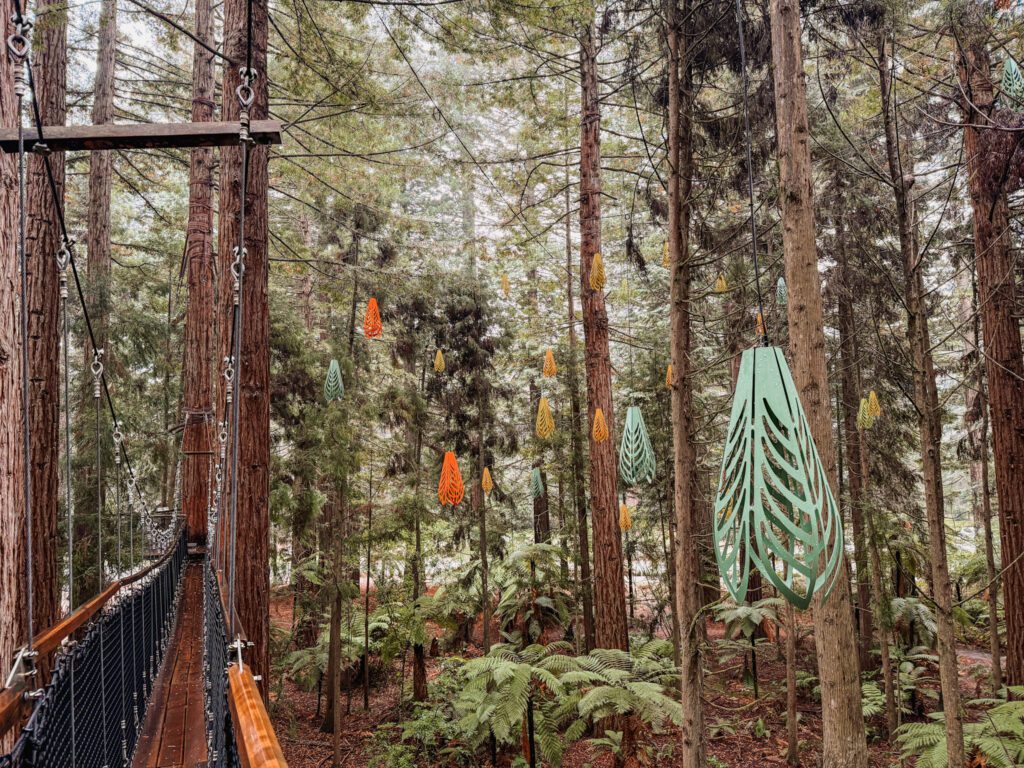
After lunch, make your way to the Redwoods Treewalk. The Redwood forest was initially planted in the 1900s to determine if they could be grown for commercial purposes due to their durability. However, in New Zealand, it was found that the trees grew far too quickly and did not have the hard density of the California Redwoods in the United States.
Today, you can visit a Redwood forest outside of Rotorua that has an elevated path through the trees. The whole walk is about half a mile (.7 kilometers). For an alternative evening experience, go through the treewalk after sunset where lanterns and light fixtures throughout the forest turn the walk into an art installation.
Mitai Maori Village + Hangi Dinner

For dinner, head to the Mitai Maori Village for a Hangi dinner experience and haka show. This experience needs to be reserved in advance. The evening starts with the Haka show and demonstration of the culture and traditions of the Maori people prior to European settlement. Then, you will get a delicious Maori buffet dinner, which will include the food that was cooked throughout the day in the traditional Hangi style.
Finally, you will hear the history of the Maori people directly from them and get the opportunity to ask any questions you may have. If you want to dive deeper into the New Zealand treaty conversation, consider visiting the Museum of New Zealand Te Papa Tongarewa in Wellington or the Waitangi Treaty Grounds in Northland.
Day 3: New Zealand Culture
As you close out your Rotorua itinerary and make your way towards the Coromandel Peninsula or Auckland, look into these different activities that talk about New Zealand’s agricultural and film culture.
Agrodome
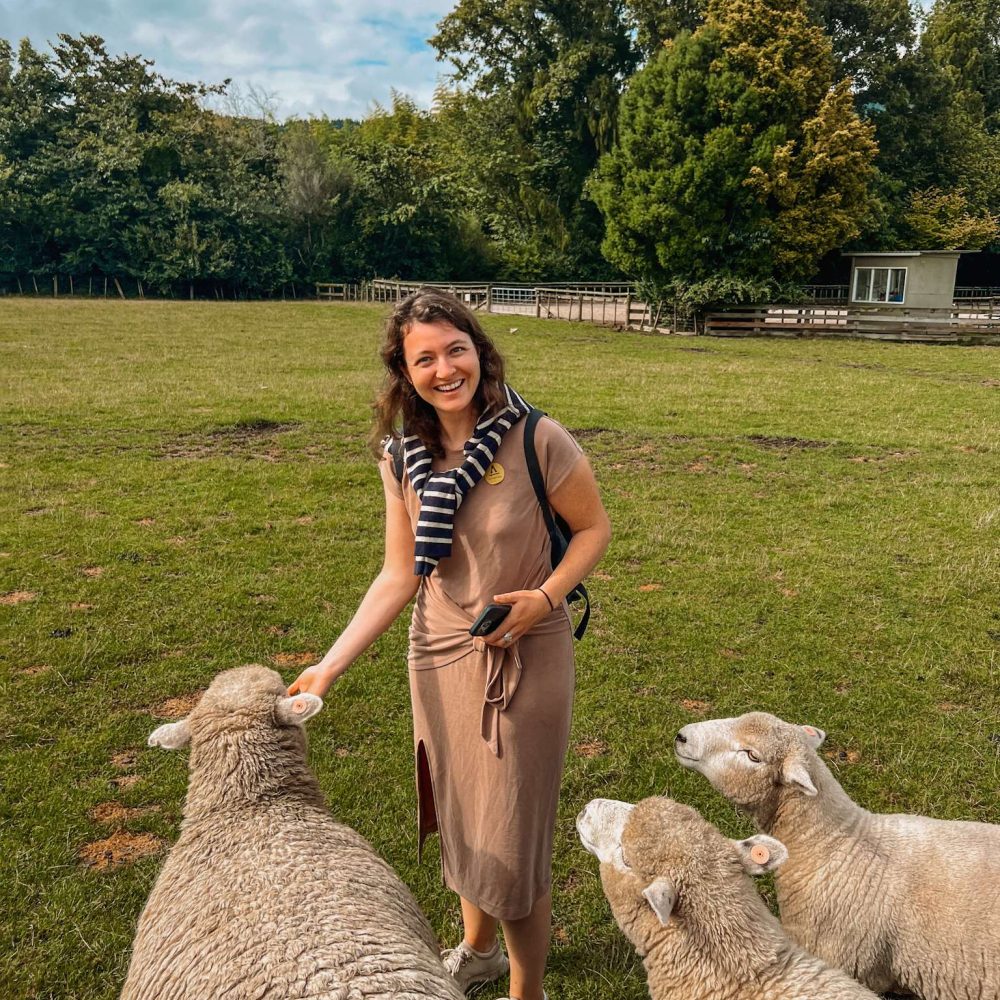
New Zealand is known for its lamb and produces meat and wool that is sold all over the world. The Agrodome is a local farm where they put together daily livestock shows that explain the process of raising sheep, including a demonstration of the shearing of sheep and the demonstration of sheep herding dogs.
If this is something that you have never seen before, then including this stop in your Rotorua itinerary is worth the experience. You will also get a tractor tour of the entire property and can take part in feeding sheep and alpacas. It’s a family friendly activity that truly anyone can enjoy.
Hobbiton Movie Set Tours
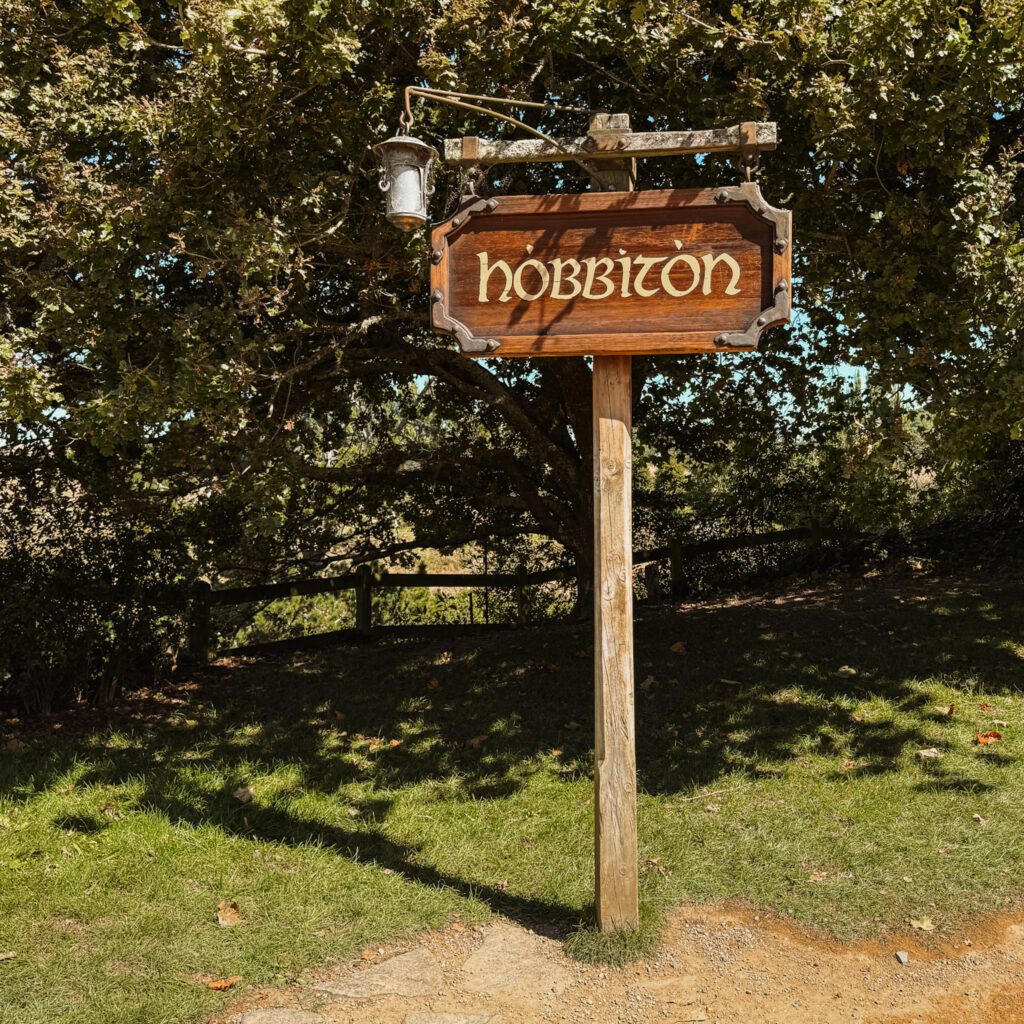
Continue your drive to the Hobbiton Movie Set Tours. This is a working farm where Peter Jackson chose to build the exterior of the Shire and has now become a tour and experience. You need to purchase tickets in advance and choose a particular time. They also have a few different experiences that can be done in addition to the tour but these sell out well in advance so plan accordingly.
What the Tour Entails
The tour is meticulously timed, starting by being bused from the visitor center to the Shire movie set. You then get to walk through the entire set with a guide explaining to you about the filming that occurred on the set and the design of the set to make movie magic. Initially, Hobbiton only had the shell of the hobbit homes from the Shire because the interiors were filmed at a studio in a different location. However, due to the demands of visitors, the interior of two different homes has been developed at a proportionally appropriate scale so you truly feel like you are walking in a hobbit’s home. You end your tour at a reconstruction of the Green Dragon Inn where you get a complementary drink and can purchase a snack. You are then bused back to the visitor center where you can purchase a variety of souvenirs.
After visiting Hobbiton, continue your road trip towards Auckland or the Coromandel Peninsula.
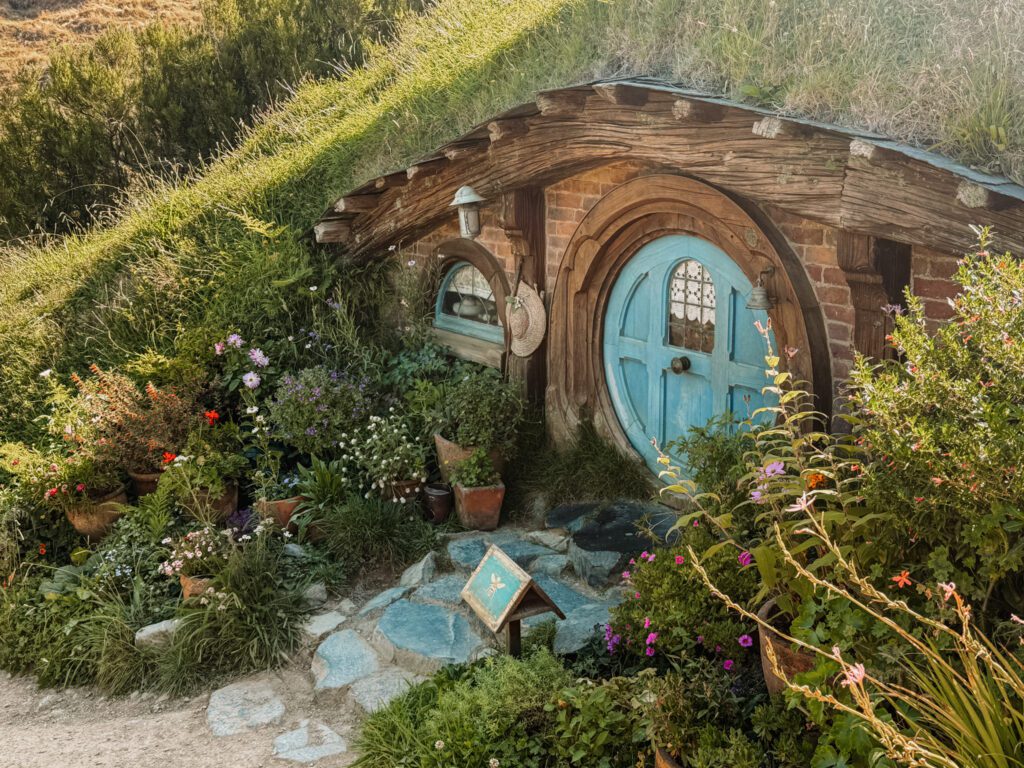
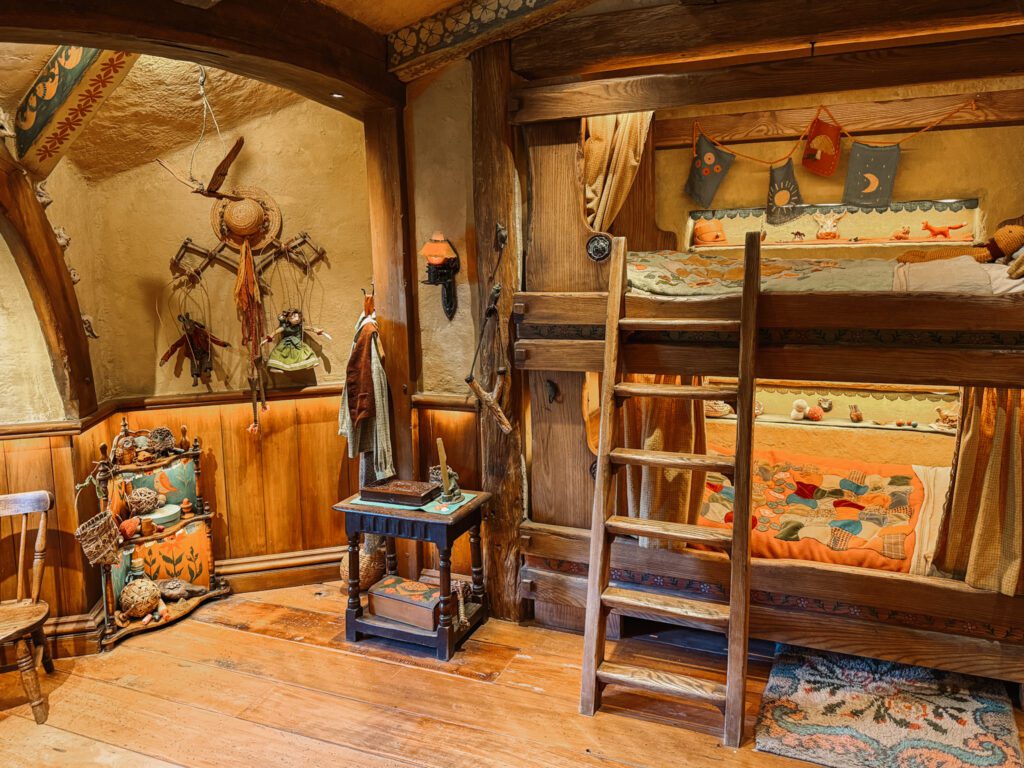
Optional Day 4 to Add to Your Rotorua Itinerary: Waitomo Glowworm Caves and Beach Towns
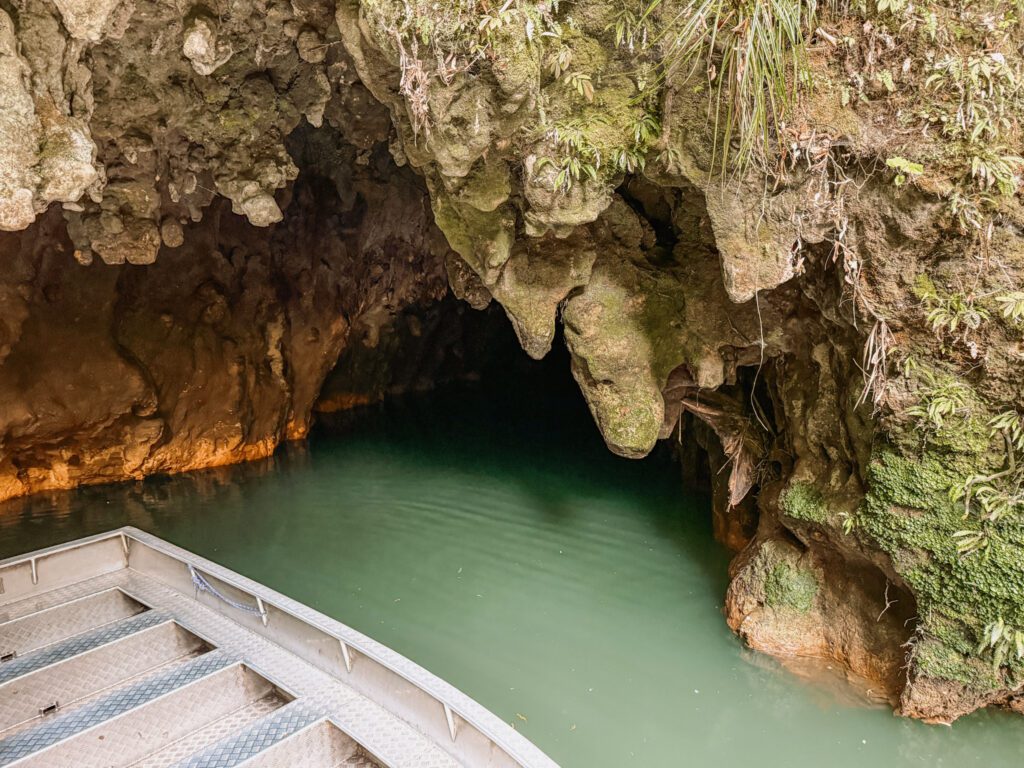
If you want to extend your time in this region of New Zealand and add more days to your Rotorua itinerary, we recommend exploring the Waitomo Glowworm Caves. These preserved caves are full of glowworms that can only be seen in pitch black darkness. You should pre-book the experience in advance. The tour lasts 45 minutes and talks about different formations that happen within caves.
The tour ends with a canoe ride through a deeper part of the cave where you will see the glowworms light up all around you. You unfortunately cannot take photos while in this part of the cave as it will affect the light emitting from the worms.
Visiting Raglan
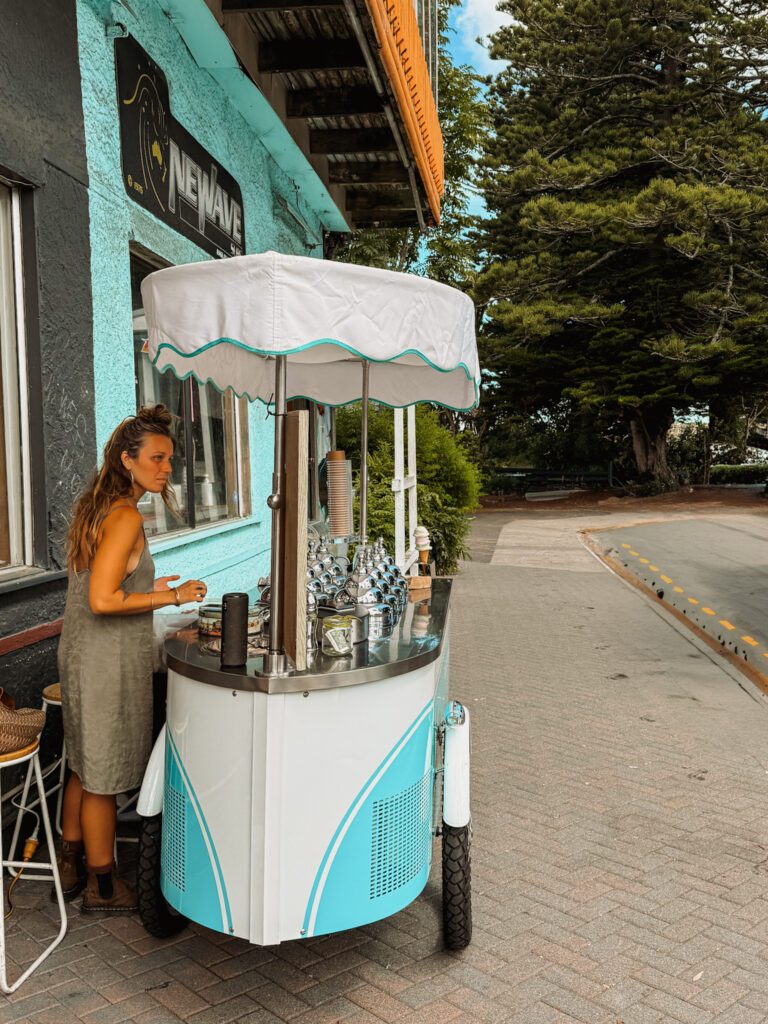
If you have even more time to spare on your road trip, you can head over to Raglan, a local beach town famous for its black sand and surfing beach. It really is a charming bohemian town. The drive is a long one so make sure you have sufficient time to visit before continuing on your trip.

